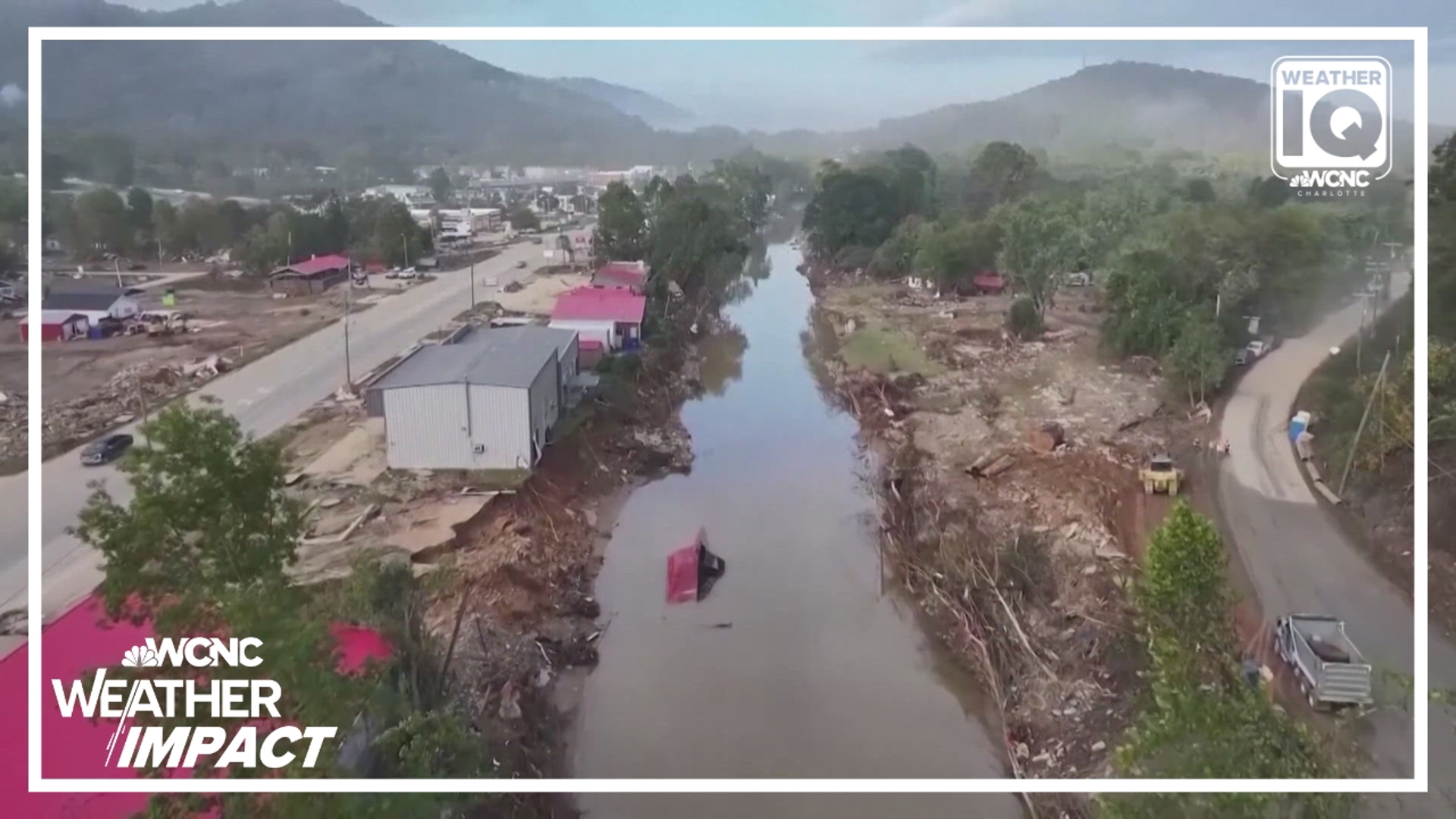CHARLOTTE, N.C. — A 1,000-year rainfall event is measured by the amount of rain over a specific period of time. This is defined as a point precipitation frequency estimate curve.
Likelihood of a 1,000-year event
This is a recurrence statistic, meaning the likelihood an event of that magnitude could happen in any given year. If you love numbers, think about it like this: A 1,000-year flood has a 0.1% chance of happening in any given year. But remember, probability is just that, probability.
When you roll a die, the chance of getting the number you want will always be one in six. No matter how many times you roll, your chance is one in six every time.
So, can you have two 1,000-year rainfall events in back-to-back years? It’s possible, but chances are pretty low with a probability of just 0.1%.
Rain vs. flooding events
While a 1,000-year rainfall event is a singular event, this doesn’t always result in a 1,000-year flood.
Flood recurrence measurements are based on the level of water within a certain creek, stream or river basin. Several factors may independently influence the relationship between a rainfall event and resulting water levels. These factors include the extent of rainfall, soil saturation before a storm, or a correlation between the storm itself. The size of the watershed is also a factor.
The extent of rainfall breaks down to how much rainfall fell and whether it fell uniformly. A non-uniform rainfall means one part of the basin may have seen a lot more rain while another saw less.
Dry soil allows greater infiltration and thus reduces the amount of water runoff. Whereas, saturated ground from previous rain has a lower capacity to accept new water.
RELATED: WCNC Charlotte's Share the Warmth campaign collects over 10K items for western North Carolina
Lastly, larger basins require storms of longer duration or intensity to create a significant increase in streamflow. A heavy rain event over a smaller basin has a much different impact than heavy rain over a larger basin.
The amount of water corresponding to a 100-year, 500-year or 1,000-year flood is known as a "flood quantile." The estimates of the flood quantiles are calculated using actual data collected at a given location. The United States Geological Survey collects data over time and calculates statistical data for a particular basin. The more years of data available, the more accurate the estimates.
As more data becomes available, estimates become more refined, which can also result in revisions. In fact, some basins may not have data for 1,000-year floods due to their rarity.
Contact Brittany Van Voorhees at bvanvoorhe@wcnc.com and follow her on Facebook, X and Instagram.

